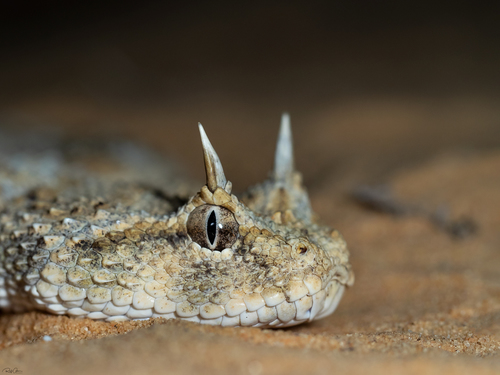
Horned Viper
The Saharan horned viper, with its iconic 'horns' and sinuous sidewinding movement, epitomizes desert adaptation. Its sand-colored scales ensure stealth, making it a master of ambush in the arid landscapes it calls home. A vital predator, it balances the ecosystem by controlling rodent populations.
Length: 30 - 61 cm
Size
Low
Aggression
Least Concern
Conservation Status
Stable
Population Trend
Characteristics
Cerastes cerastes, commonly known as the Saharan horned viper, is renowned for its distinctive horn-like scales above each eye. This desert-dwelling snake is found in North African sandy environments, where it employs sidewinding locomotion to navigate the hot dunes. Its cryptic coloration provides excellent camouflage against predators and prey.
Distribution Range of the Horned Viper
Cerastes cerastes, commonly known as the Saharan horned viper, is native to the deserts of North Africa. Its geographical distribution includes countries such as Morocco, Algeria, Tunisia, Libya, Egypt, and extends eastward into the Sinai Peninsula and parts of the Middle East.
Horned Viper's Habitat
Environmental Conditions
Cerastes cerastes thrives in arid desert environments characterized by sandy and rocky terrains. The climate in these regions is typically hot and dry, with extreme temperature variations between day and night. Rainfall is scarce, leading to a predominantly xeric landscape.
Ecological Niche
The Saharan horned viper is adapted to life in desert ecosystems, where it serves as both predator and prey. It is well-camouflaged in the sand and uses a sidewinding locomotion to navigate the loose substrate efficiently. This species primarily preys on small mammals, birds, and lizards, playing a crucial role in controlling their populations. Its ability to burrow into the sand helps it avoid extreme temperatures and predators.
Copyright @ Nature Style Limited. All Rights Reserved.
 English
English